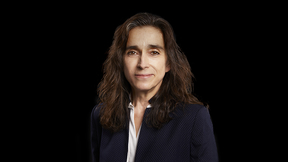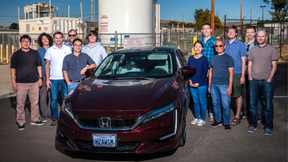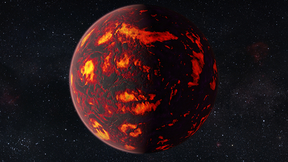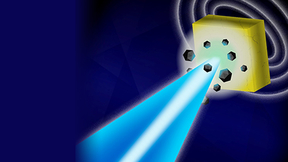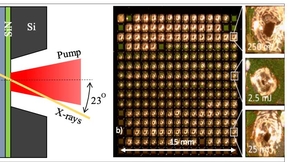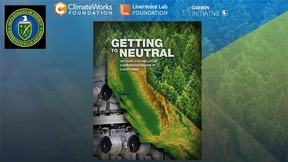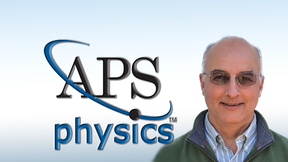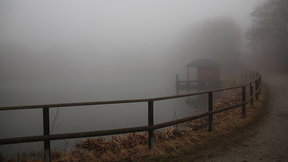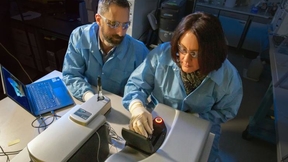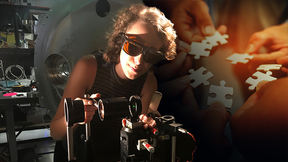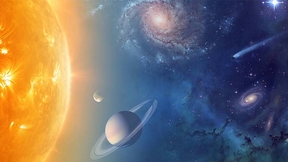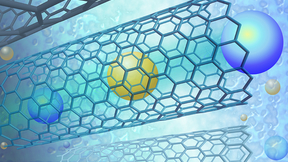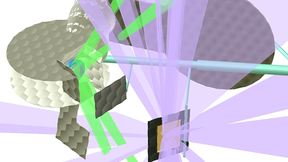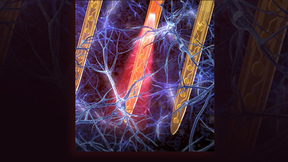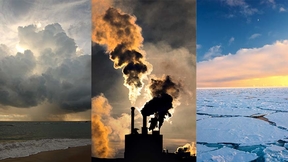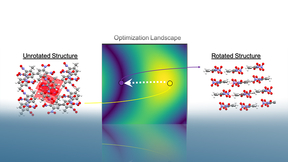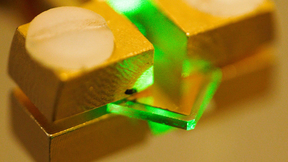Back
Physical and Life Sciences
Kim Budil selected as director of Lawrence Livermore
Kim Budil has been named director of Lawrence Livermore National Laboratory (LLNL). Charlene Zettel, chair of Lawrence Livermore National Security, LLC (LLNS), which manages the Laboratory for the Department of Energy's (DOE) National Nuclear Security Administration (NNSA), made the announcement to Laboratory employees Jan. 28. Budil will begin her new role on March 2…
LLNL hydrogen researchers win technical program award
DOE’s Hydrogen and Fuel Cell Technology Office (HFTO) selected Brandon Wood and Tadashi Ogitsu (both MSD) for the 2020 Technical Program Area Award in Hydrogen Fuel R&D. This award recognizes the computational materials science team at LLNL for their exceptional support to the HydroGEN Advanced Water Splitting Materials and Hydrogen Materials Advanced Research…
NIF experiments probe carbon at record pressures
Carbon is one of the most ubiquitous elements in existence. As the fourth most abundant element in the universe, a building block for all known life and a material that sits in the interior of carbon-rich exoplanets, the element has been subject to intense investigation by scientists. Decades of studies have shown that carbon’s crystal structure has a significant impact on…
Lab teams earn DOE Secretary Achievement Awards
Lawrence Livermore National Laboratory (LLNL) employees, participating in 10 project teams, recently earned Department of Energy (DOE) Secretary Achievement Awards. Representing some of the highest internal, non-monetary recognition that DOE employees and contractors can receive, these awards recognize DOE employees and contractors for their service and contributions to…
NIF conducts first-ever shot with explosives
The first-ever shot to study a high explosive sample was recently conducted at the National Ignition Facility (NIF), the world’s most energetic laser. The results from the shot included novel data that will help researchers unlock the mysteries of high-explosive (HE) chemistry and position Lawrence Livermore National Laboratory (LLNL) to continue its legacy as a leader in…
It’s more than just solid
By placing a shock-compressed sample of zirconium under ultrafast time-resolved X-rays, Lawrence Livermore National Laboratory (LLNL) scientists and collaborators were able to see an intermediate phase along the transition between two solid phases. Theory has predicted the existence of an intermediate step in this phase transition, but it had not been observed until now. …
Lab team earns DOE Secretary Achievement Award
Lawrence Livermore National Laboratory‘s (LLNL) "Getting to Neutral" Carbon Emissions Team has earned a Department of Energy (DOE) Secretary Achievement Award for its groundbreaking work on how California could reach the goal of becoming carbon neutral by 2045. Representing some of the highest internal, non-monetary recognition that DOE employees and contractors can…
LLNL experimentalist climbing ranks of physics society
As an experimentalist at Lawrence Livermore National Laboratory (LLNL) developing diagnostics and experimental techniques in the field of dynamic high-pressure physics, Peter Celliers is on the path of leading a national topical group of the American Physical Society (APS). Celliers was recently elected to the executive committee as vice-chair of the American Physical…
Air pollution levels depend on drizzle rates
Scientists from Lawrence Livermore National Laboratory (LLNL), Scripps Institution of Oceanography and international collaborators have shown that an improved representation of drizzle rates leads to more pollution in the atmosphere. The research appears in Nature Geoscience. Atmospheric aerosols are of great climatic and environmental importance due to their effects on…
LLNL and United Kingdom company to collaborate on development of universal coronavirus vaccine
ConserV Bioscience Limited (CBL) and Lawrence Livermore National Laboratory (LLNL) have agreed to collaborate on the development of a broad-spectrum or “universal” coronavirus vaccine. This collaboration brings together CBL’s expertise in identifying antigens and LLNL’s nanolipoprotein delivery system. The vaccine has been designed to provide broad-spectrum protection…
Lawrence Livermore's '2020 Year in Review'
Though 2020 was dominated by events surrounding the COVID-19 pandemic — whether it was adapting to social distancing and the need to telecommute, safeguarding employees as they returned to conduct mission-essential work or engaging in COVID-related research — Lawrence Livermore National Laboratory (LLNL) managed an exceptional year in all facets of science and technology…
Lab's ACT-UP awards focus on collaborative research
With a focus on increasing joint research efforts between Lawrence Livermore National Laboratory (LLNL) and universities, the Lab’s Weapon Physics and Design (WPD) Academic Collaboration Team (ACT) University Program has awarded this year’s ACT-UP awards. Now in its second year, the ACT-UP awards were created to encourage and advance strategic partnerships among…
Putting the pieces back together – reconstructing the solar system’s original architecture
As the solar system was developing, the giant planets (Jupiter and Saturn) formed very early, and as they grew, they migrated both closer to and further away from the sun to stay in gravitationally stable orbits. The gravitational effect of these massive objects caused immense reshuffling of other planetary bodies that were forming at the time, meaning that the current…
Fast transport in carbon nanotube membranes could advance human health
Lawrence Livermore National Laboratory (LLNL) researchers have discovered that carbon nanotube membrane pores could enable ultra-rapid dialysis processes that would greatly reduce treatment time for hemodialysis patients. The ability to separate molecular constituents in complex solutions is crucial to many biological and man-made processes. One way is via the application…
Researchers develop broadband X-ray source needed to perform new measurements at NIF
Lawrence Livermore National Laboratory (LLNL) researchers have developed an X-ray source that can diagnose temperature in experiments that probe conditions like those at the very center of planets. The new source will be used to perform extended X-ray absorption fine structure (EXAFS) experiments at the National Ignition Facility (NIF). The work was published in Applied…
LLNL develops optical capability for thin-film neural implants to look into brain activity
Combining hybrid polymer materials with microfabrication and 3D printing, Lawrence Livermore National Laboratory (LLNL) has developed an ultra-compact, lightweight and minimally invasive optoelectronic neural implant that could be used for long-term studies of brain activity. The new implantable devices are built upon a new platform LLNL researchers are calling POEMS …
Paying for emissions we’ve already released
The planet is committed to global warming in excess of 2 degrees Celsius (3.6 degrees Fahrenheit) just from greenhouse gases that have already been added to the atmosphere. This is the conclusion of new research by scientists from Nanjing University, Lawrence Livermore National Laboratory (LLNL) and Texas A&M University, which appears in the latest edition of Nature…
Molecular crystal structures pack it in
Whether organic chemists are working on developing new molecular energetics or creating new blockbuster drugs in the pharmaceutical industry, each is searching how to optimize the chemical structure of a molecule to attain desired target properties. Part of that optimization includes a molecular crystal’s packing motif, a perceived pattern in how molecules orient relative…
Lab garners five commercialization grants
Lawrence Livermore National Laboratory (LLNL) scientists and engineers have put together another first-rate year securing major grants through the Department of Energy’s (DOE) Technology Commercialization Fund (TCF). “We did quite well, although the diversity of the research projects funded wasn’t as broad as last year,” said Rich Rankin, the director of the Lab’s…
Diamonds are not just for jewelry anymore
When it comes to the semiconductor industry, silicon has reigned as king in the electronics field, but it is coming to the end of its physical limits. To more effectively power the electrical grid, locomotives and even electric cars, Lawrence Livermore National Laboratory (LLNL) scientists are turning to diamond as an ultra-wide bandgap semiconductor. Diamond has been…


